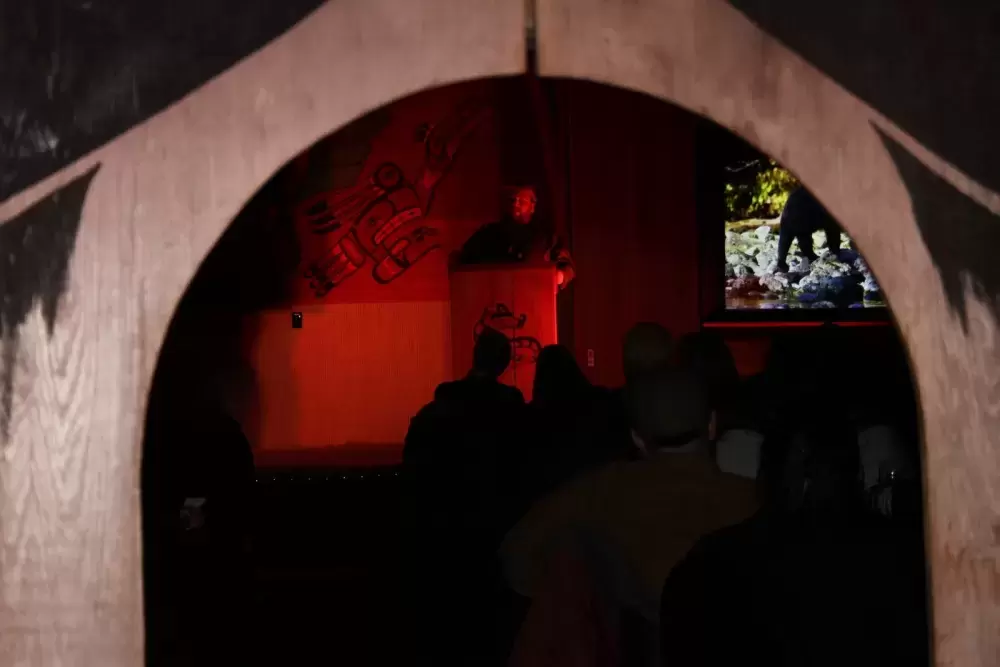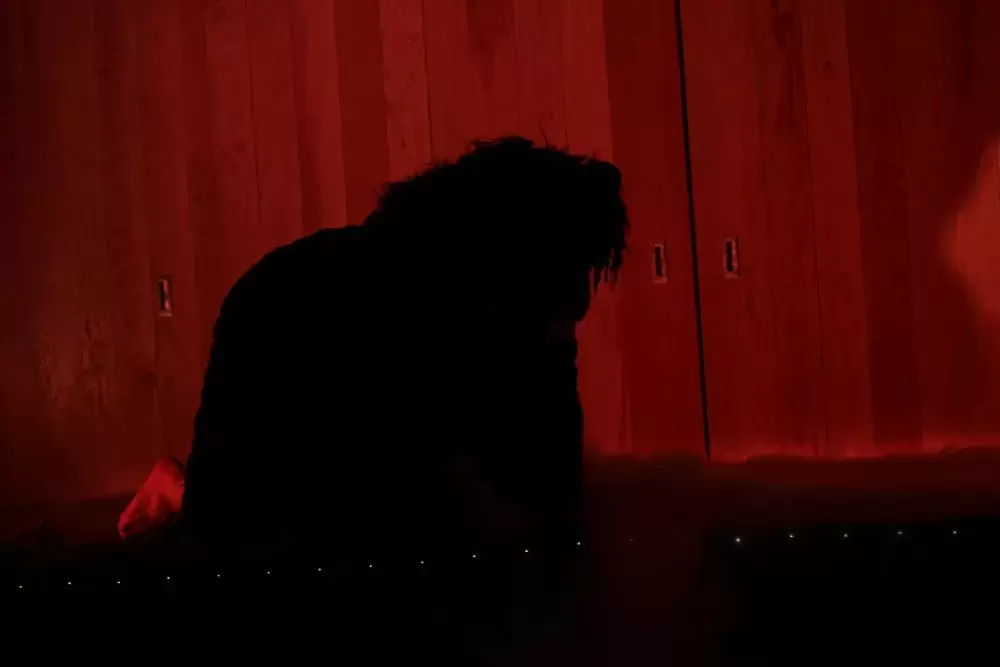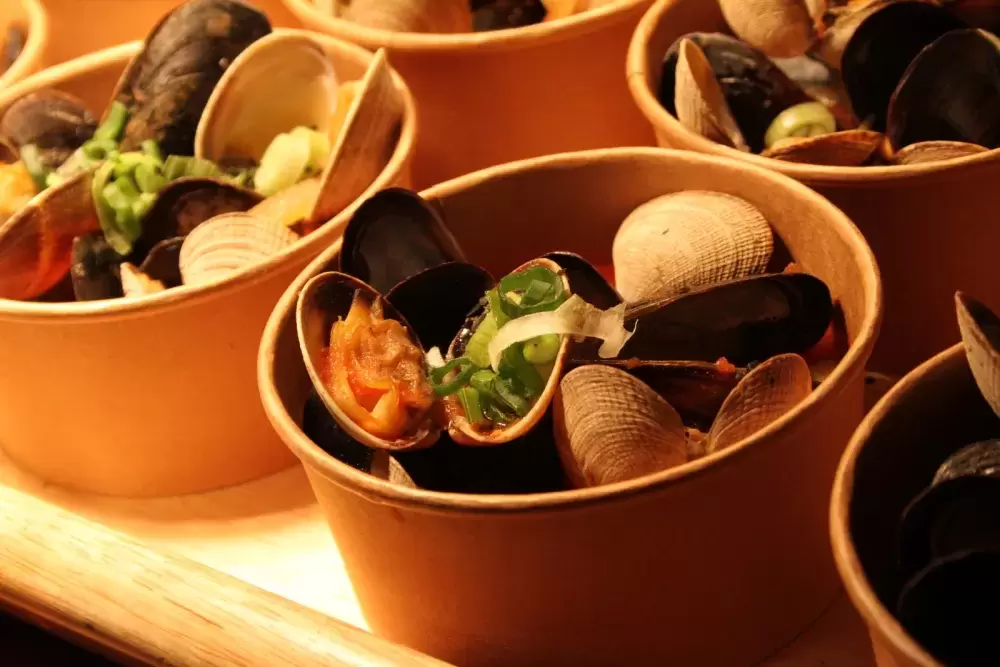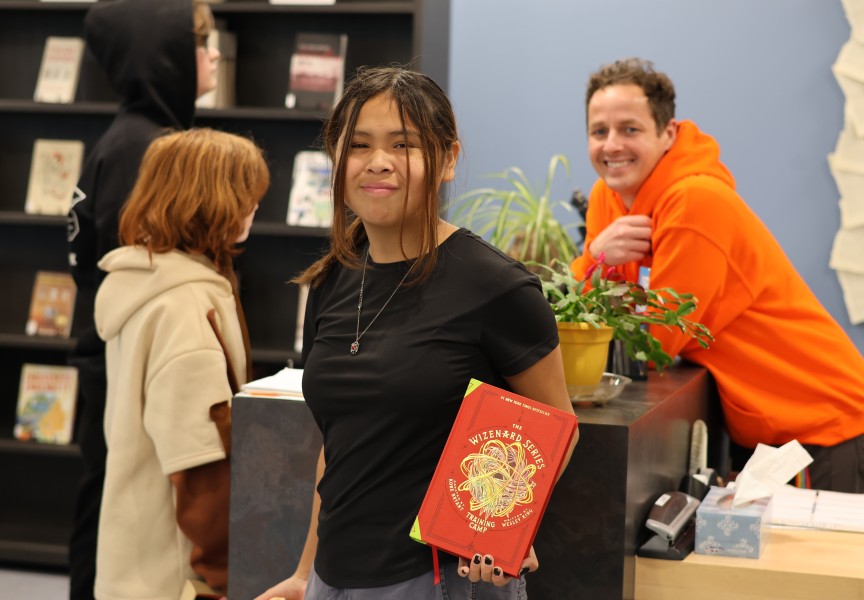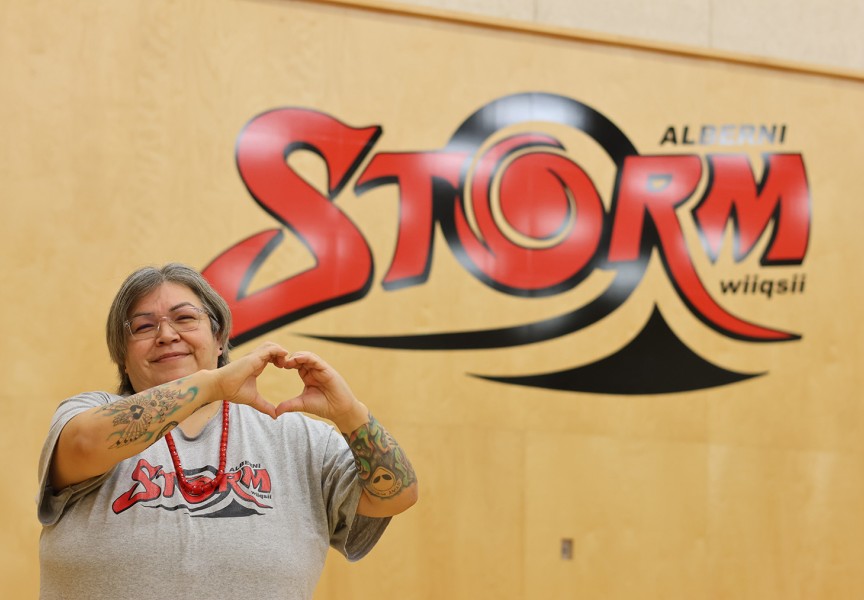Among round tables, in a traditionally inspired longhouse, Naaʔuu invites community members to gather and celebrate Tla-o-qui-aht culture for an evening.
On March 16 the evening began with Hjalmer Wenstob, co-host and artistic director for Naaʔuu, along with singers welcoming guests with a paddle song. Soon after, the room filled with sounds of laughter and conversation as plates were brimming with salmon, mussels, and bannock, an abundance of coastal cuisine made by Heartwood Kitchen.
Wenstob said this event was an opportunity to tell Tla-o-qui-aht’s narrative from their own perspective.
“What we're doing is sharing a history that you may have not heard before,” said Wenstob. “A lot of the time Indigenous histories and our own histories aren't told from our perspective, they're told from a perspective other than our own and in that they can get skewed.”
Tla-o-qui-aht’s story goes back thousands of years before the first contact with Europeans that is commonly spoken about and taught in schools, explained Wenstob.
“The way that we share in public is to tell the story and lead the story in our own words, with our own visuals, with our own dancers, and singers,” he said.
Wenstob began with sharing that “the beginning of stories” for Tla-o-qui-aht connects to the ocean, salmon, and cedar.
His account journeyed back many years to “the very beginning of time,” Tla-o-qui-aht’s creation story.
“The elements around us that really make us and make up who we are,” he explained.
A drum began to play, a faint song followed, and as Wenstob shared, a dancer wearing a salmon mask moved across the stage and through the longhouse.
Soon after a dancer, dressed in fur and Joe David’s bear mask, slowly moved its way through the crowd. Throughout the night the guardian mask, language mask, Covid mask, and raven mask followed, sharing stories of Tla-o-qui-aht, their connection to the land and their culture, through time.
He shared a story of Captain Robert Gray, who commissioned Tla-o-qui-aht to build the first tall ship on the coast. After Tla-o-qui-aht refused Captain Gray’s request to take food, supplies, and women from their community, Gray destroyed over 200 Totem poles and the houses that lined the shoreline of the village of Opitsaht.
“In a time of truth, and in a time of reconciliation…it's really important for you to hear those stories, it's really important for you to hear those truths,” shared Wenstob.
In 1984, when Meares Island was at risk of being logged, hereditary chiefs and elders declared it a Tribal Park for protection from logging.
With the 2008 Tribal Parks Declaration, Tribal Park Guardians would then help monitor and implement the Tribal Park plan, explained Tla-o-qui-aht Natural Resources Manager Saya Masso.
Tla-o-qui-aht territory is now divided into four Tribal Parks that encompass their territory: Wah-nuh-jus - Hilth-hoo-is (Meares Island), Tranquil Tribal Park, Ha`uukmin (Kennedy Lake Watershed), and Esowista Tribal Park.
“It's been a tool for us to engage business, for sharing who Tla-o-qui-aht is, to explain how we envision our territories to be used and respected,” said Masso.
Through the guardianship program, Masso said Tla-o-qui-aht can benefit from tourism while also mitigating the impacts of it.
According to a 2018 report, Tofino saw a total of 600,000 visitors, with an average of 6,600 daily tourists in July and August.
“If tourists want to come and be here, we want to teach them. We want to have a space of education too,” said Wenstob.
Wenstob explains that tourism can be a space where Tla-o-qui-aht culture is revived while also protecting their homeland and giving back to the local communities.
“We started with a story, a story that reflects in the fact that we're known as salmon people, we're known as cedar people, we're known as amazing singers and whalers, because of our connection to this place,” said Wenstob as he concludes his segment of Tla-o-qui-aht history at Naaʔuu.
“Who are cedar people without cedar, who are salmon people without salmon, who are whalers without whales?” asked Wenstob. “Our work has changed from harvesting to relationships with sustainability and stewardship, we've had to change to become protectors, we've had the chance to become guardians, guardians of this place.”
Proceeds from ticket sales for Naaʔuu support the Tribal Parks Guardians.
Tickets can be purchased at https://tribalparks.com/naauu/


